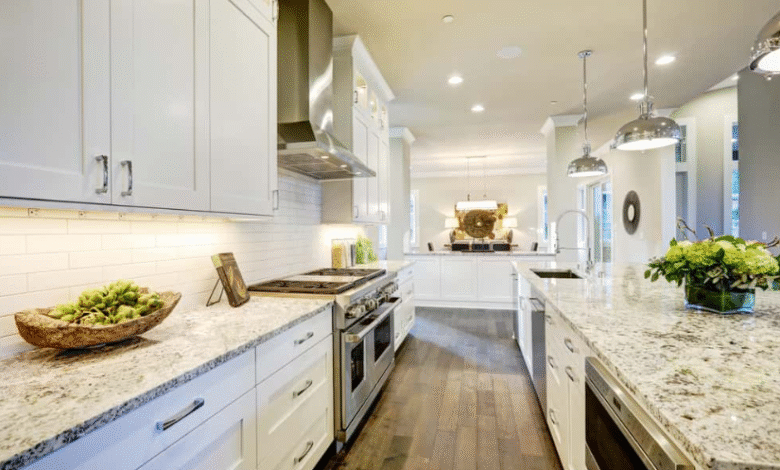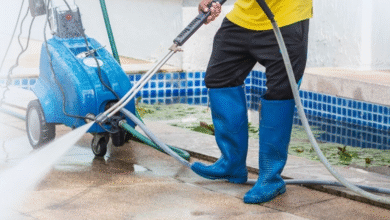Granite Kitchen Countertops Essential Guide for Durable and Stylish Homes

Granite kitchen countertops are a popular choice for homeowners seeking a durable and stylish surface. Their natural stone composition makes them resistant to heat, scratches, water, and bacteria, which enhances both functionality and longevity in a busy kitchen environment.
Granite offers a wide range of colors and patterns, allowing it to complement various kitchen designs while maintaining its reputation for lasting beauty. Choosing the right type and color can be challenging, but understanding the material’s variations helps make an informed decision.
With many options available, granite continues to be a practical investment that combines strength with aesthetic appeal, making it a go-to surface for kitchens and bathrooms alike.
Granite Kitchen Countertops Overview
Granite countertops combine natural durability with distinctive aesthetics. Homeowners value their resistance to heat and scratches while enjoying a broad selection of colors and patterns. When choosing granite, it is important to compare its characteristics with other popular countertop materials to determine the best fit for a kitchen.
Benefits of Granite Countertops
Granite is highly durable because it is a natural igneous rock formed from cooled magma. This provides excellent resistance to heat, making it safe to place hot pots or pans directly on the surface. Its hardness also protects against scratches and chips during daily kitchen use.
Maintenance is straightforward. Granite countertops require periodic sealing, which helps prevent stains and keeps the surface hygienic. With proper care, the material retains its appearance and functionality for many years.
Additionally, granite’s unique natural patterns enhance kitchen aesthetics. Its strength means it can support heavy use without degrading, making it a practical choice for active households.
Popular Granite Colors and Patterns
Granite offers a wide range of colors and patterns, which vary depending on the quarry location. Common shades include white, black, gray, beige, and various earth tones.
Patterns can range from uniform speckling to bold veining and swirling. White granite paired with light cabinetry creates an airy feel, while darker granite suits modern or industrial kitchen designs.
Homeowners may select granite based on color coordination, texture, or pattern complexity to achieve a desired style. Some popular varieties include:
- Absolute Black: Solid deep black, sleek and modern
- Bianco Romano: White base with gray and beige veining
- Ubatuba: Dark green with flecks of gold and black
This diversity makes granite adaptable to both traditional and contemporary kitchens.
See also: Smart Home DecorAdTech: Innovations in Home Automation
Comparing Granite to Other Countertop Materials
Granite is often compared with quartz, marble, and laminate in terms of durability, maintenance, and cost.
| Feature | Granite | Quartz | Marble | Laminate |
| Durability | High (heat & scratch resistant) | Very high (non-porous, scratch resistant) | Medium (prone to etching and scratching) | Low (easily scratched and damaged) |
| Maintenance | Sealing required periodically | Low maintenance, no sealing | High maintenance, sealing and care needed | Minimal maintenance, not heat resistant |
| Cost | Moderate to high | Moderate to high | High | Low |
| Aesthetic | Natural stones, unique patterns | Consistent patterns, customizable | Elegant veining and color depth | Limited design options |
Granite offers an excellent balance of durability and natural beauty. However, quartz provides easier maintenance with similar durability. Marble excels in timeless elegance but requires more care. Laminate is budget-friendly but less durable and less heat resistant than natural stone options.
Installation and Maintenance
Granite kitchen countertops require precise installation and regular upkeep to maintain their appearance and durability. Proper handling during installation and consistent maintenance practices are essential to extend the lifespan of the granite surface.
Professional vs. DIY Installation
Professional installation ensures the granite slabs are accurately measured, cut, and securely fitted, minimizing the risk of damage during handling. Experts use specialized tools and adhesives that guarantee the seams are tight and the countertop is level.
DIY installation is possible but demands advanced skills and proper equipment. Mistakes in cutting or setting granite can result in costly damage. Homeowners attempting DIY must carefully plan measurements, use a diamond blade for cutting, and apply sealant effectively.
Choosing professional installation is advisable for those without experience, while skilled DIYers may undertake the project if confident in their precision and tools.
Cleaning and Care Tips
Granite countertops need daily cleaning with a soft cloth and mild detergent or a granite-specific cleaner to avoid surface damage. Avoid acidic or abrasive cleaners such as vinegar, lemon juice, or bleach, which can dull the finish.
Sealing the granite at least once a year is critical to prevent stains and moisture penetration. Sealers create a protective barrier that improves resistance to spills and kitchen accidents.
Wiping spills promptly and using cutting boards and trivets can protect the surface from scratches and heat damage.
Common Issues and Solutions
Cracks and chips can occur if heavy objects are dropped on the granite or if there are installation flaws. Small chips can be repaired with epoxy resin kits, but larger cracks may require professional restoration.
Stains, often caused by oil or wine, typically occur if the surface is unsealed or sealing has worn off. Applying a poultice made from baking soda and water can help draw out stains.
Loose seams or edges usually indicate poor installation or adhesive failure and should be fixed by a professional to maintain stability and appearance.




